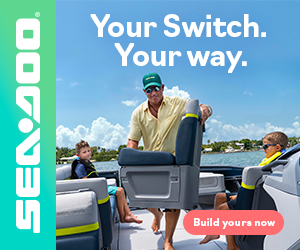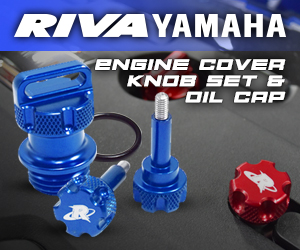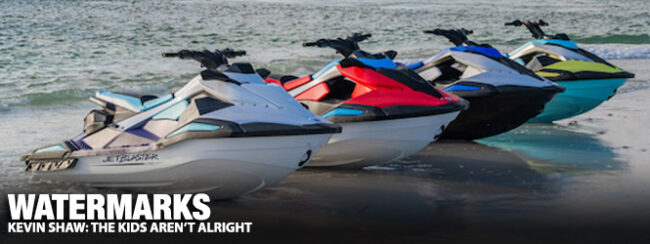
Admittedly, it’s been years since my last editorial. I guess I haven’t had much to say. Well, at least anything of any import that would necessitate me typing out my thoughts in a somewhat cogent manner…until today. I’ll preface this screed by saying, if you aren’t a subscriber to our YouTube channel, you might not have know that I host a podcast that airs live (most every) Monday night.
The Watercraft Journal IRL (In Real Life) podcast typically welcomes guests from all facets of the industry to discuss topics in a loose, freeform conversational format – apart from the occasional video of me just running my mouth for an hour. It’s the basic kind of podcast format we’ve come accustomed to, but solely focused on personal watercraft, racing and the industry itself.
And while I typically don’t ever review our own show, I must say that last night’s conversation with Classic Jetski’s Joe Hill was easily one of my favorites in a very long time. Through his YouTube channel, Joe has been advocating the return of lightweight, nimble watercraft that require some athleticism to master for a while now.
Although 15 years his senior, I have come to the same conclusion – albeit ashamed of my role in pushing the bloating of today’s machines over the past seventeen years. He and I are of one mind that the current trajectory of the PWC industry is racing toward a dead end, although Joe may differ on how we’ve reached our current situation. Let me elaborate:
I’ve observed that for the last several years, OE’s have targeted cash flush baby boomers while ignoring youth buyers. [Note that I said youth not entry level buyers. -Ed.] While this short term model solves the need for immediate revenue (and option-loaded, full-sized runabouts offer the greatest yield per sale) it succeeds at the cost of building up a future generation of enthusiasts.
The product advertised and sold today has little appeal to 18-to-25 year old males, who as we know, have been the core driver of powersports development for the past 40 years. Youthful riders aren’t asking for windshields and rearward-facing cameras. Sexagenarians are. Moreover, few can afford a $22K RXP-X 325 or GP1800R SVHO, nor have the means to tow or store one.
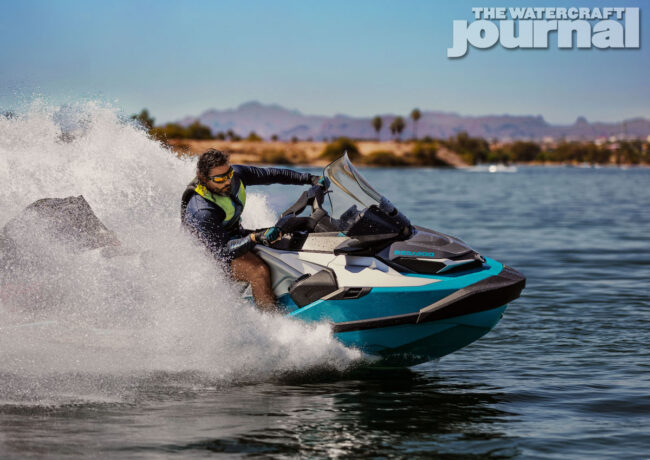
More often than not, if you see a 22-year-old on one, it’s registered to his father or grandparent. Even within Sea-Doo they acknowledge that, “The one who buys the ski isn’t the one whose riding it.” What does that mean? It means that as dealers report the average age of a buyer is 54-years-old, that isn’t always the one who finances the purchase.
And again, these high performance machines only constitute 10 percent of total product sales. Yamaha’s bread-and-butter is the VX Cruiser. Sea-Doo is split between the GTI 130 and the Spark. Although I applaud both Yamaha and Sea-Doo for offering a catalog of vehicles that allows for a low-end entry point, these fail to attract energetic, thrill-seeking young men.
The Trixx constitutes nearly 70-percent of all Spark sales, leading one to believe that I’m wrong in my assessment. In fact, demand by Yamaha loyalists forced the manufacturer to scrap the EXR and create the Jet Blaster four years ago. Moreover, the newest Jet Blaster series includes a 2- and 3-passenger Pro model that better emulates the Trixx than ever before.
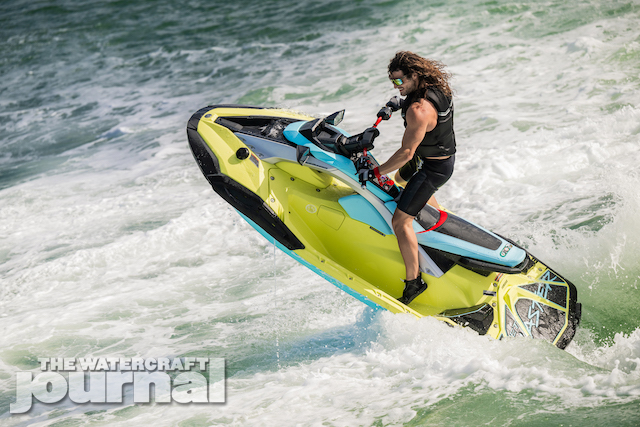
Conversely, I posit that the Trixx is evidence that the demand for a small, nimble and athletic 1- or 2-seater with more power is feverish; and that the audience is so desperate that even a middling “freestyle” entry will be accepted (for now). The Jet Blaster Pro and Trixx are an evolutionary step in the right direction but not the final destination.
But again, who’s cutting the check for these skis? Grandparents, that’s who. Often the purchase of a Rec Lite unit is seen as a cheap, disposable watercraft meant for the grandkids to ride when visiting the grandparents at the lake house. After all, the kids running an all plastic Spark into the dock hurts a lot less than granddad’s brand new GTX Limited 325.
By focusing on cash flush baby boomers (those born between 1946 to 1964 who comprise the overwhelming majority of the buying market, and thereby steer the development of future product), the OE’s are willfully ignoring how quickly this demographic is “aging out” of the hobby. It cannot be said more plainly, there’s little product aimed at youth buyers.
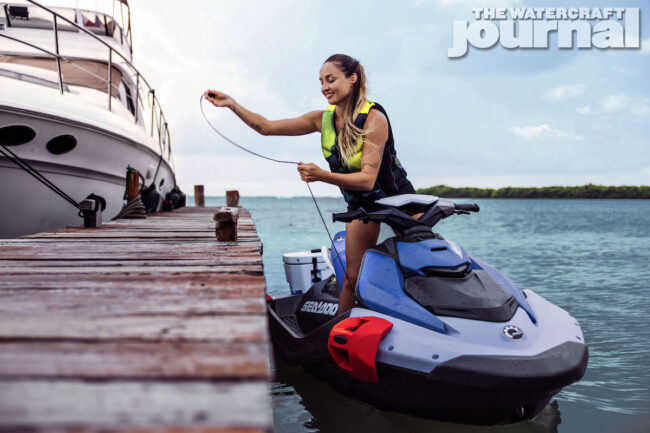
Yamaha’s new Jet Blaster and Sea-Doo’s Spark needs the slightest nudge to open up a whole new generation of PWC riders – and the OE’s know this. It’s not a matter of ability but will. Neither company appears willing to risk investing in building a new generation of enthusiasts, when it’s safer to give boomers whatever bell or whistle they clamor for.
I was cautioned by a dealer owner, “Sea-Doo makes as much on the sale of a single RXT-X 325 as it does three Trixx sales,” making big dollar, full-sized ski sales “low hanging fruit.” Yet, the sale of a single RXT-X goes to one individual while the latter results in three times as many future customers.
The manufacturers’ focus on the high end customer has slowly strangled key auxiliaries that built this hobby: there are very few sportsman level youth racers. There is no unified national tour. Professional racing is all but vanished, with little means for athletes to even cover their costs not to mention make a career from this endeavor.
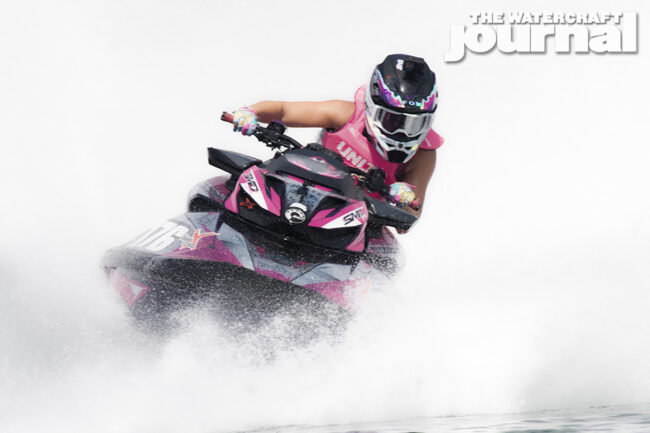
The absence of an organized racing body gives youthful athletes no venue to compete, thereby pushing them to seek competition in other sports. With no wellspring of new riders and racers, you have no rising generation to push product, inspire sales and in my case, promote and advocate this product to the masses.
I came from this world and it’s all but completely erased. Somehow Kawasaki, Yamaha and Sea-Doo blindly (and foolishly) think they can survive in five or even ten years’ time without new and youthful enthusiasts – and bloated, overweight $25,000 runabouts or beige, milquetoast Rec Lites with barely enough oomph to hop a wave isn’t the way forward.
As Joe emphasized in last night, these brands need to embrace their legacy fully; splash their skis in bold colors, strip off all of the frills and lace, and turn up the wick. Both Yamaha and Sea-Doo are poised to execute the greatest resurgence of youth interest in jet skiing since 1995. While some factors cannot perfectly replicate that pinnacle year, the recipe requires little change:
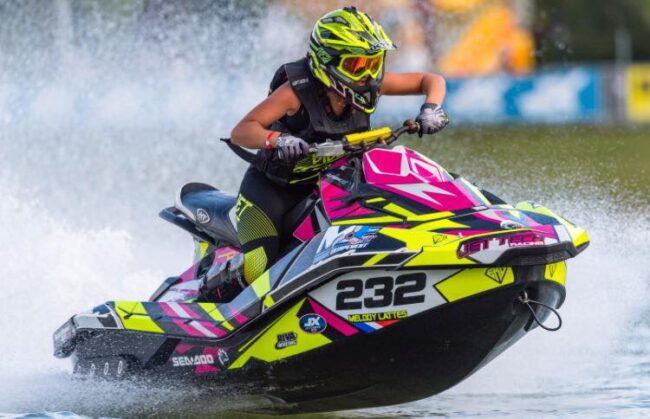
Simply shed any semblance of political correctness and target 18-to-25 year old men. Both the Spark and ‘Blaster can reach the 60mph threshold with little coaxing. Both manufacturers can eke out 130-horsepower from tuning the TR-1 and swapping the 900 ACE out for 1630 ACE; and 61mph on a Spark is a helluva lot more fun than 68mph on a GTX.
Post script: Undoubtedly, this editorial will incur the wrath of many who will see it necessary to angrily peck out strongly worded replies in the comment section. While you’re entirely welcome to do so, know that I will not be swayed on this topic. I’ve witnessed the slow strangulation of the sport I loved because of this shortsighted sales strategy, and I am choosing to die on this hill.
Manufacturers must focus on small, loose and fast Rec Lite skis aimed at young men or wither and die like the sport they ignored.
Go Get Wet,
Kevin





